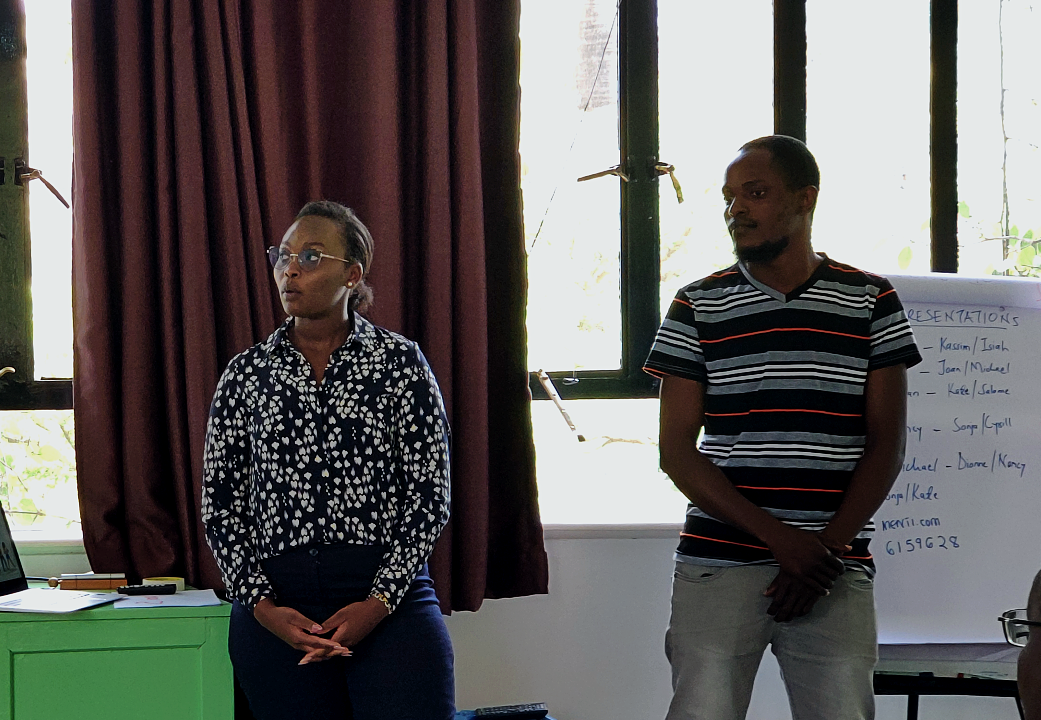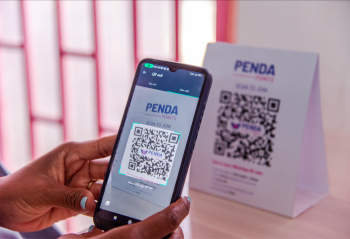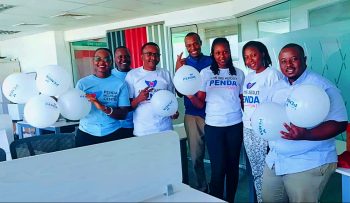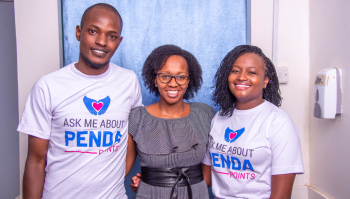How Cross-Departmental Collaboration Can Transform Your Organization
March 30, 2023



A Case Study of Penda Health
Have you ever looked at the evening skies and by chance seen a flock of birds flying around in a beautiful effortless formation? If you have, did you perhaps wonder like most of us, how the birds are able to fly in synchrony without flying into each other? The bird at the back of the formation knows the exact direction to take, is somehow communicating with the rest of the flock presenting a most graceful show. Why do they do this and is this from practice or are they just born this way? As fascinating and natural as it looks, one thing is clear, it takes immense collaboration to pull off this amazing feat.
We recently had the pleasure of attending a launch event that was the result of similar collaboration between two managers who work in different departments in their organization. To us, this story is as fascinating and intriguing as observing the flock of birds and we take you back to how it all began.
Nearly one year ago on a cold and overcast Friday morning, Joan Yego and Kassim Murenga from Penda Health walked into an unconventional classroom set up. As they found their places in a circle for the welcome activity, neither Kassim, a Software Systems Analyst nor Joan, a Business Intelligence Lead could anticipate the roller coaster ride they were embarking on. They had both just walked into their first of nine sessions of our Leadership for Growth program. At the time Joan had just taken up a management role within the organization, and was adjusting to her new responsibilities. Meanwhile, Kassim, who is ever the problem solver, was deeply thinking about how enhancing ownership and accountability could ease adoption and success of solutions in the organization.
A great task, differences and collaboration
A couple of weeks into the program,they were tasked with identifying a challenge or opportunity within their organization for which they would find a solution as part of the program’s Business Innovation Project(BIP). They had the option to work individually or in groups and chose the latter. The two admit that they have different problem solving approaches which sometimes led to disagreements, but they also acknowledge this as one of their greatest strengths.
Joan had earlier been involved in analyzing customer retention across the business and realized that the churn rate(the annual percentage rate at which customers stopped seeking services at the clinics) was quite high.
“We observed that a considerable number of patients would come to the clinics once or twice and then completely drop off and were closely looking into how we could improve retention,” she says.
The business had been keen on addressing this issue at the time but a transition within the team led to a pause in the proposed solution, a patient loyalty program. Kassim adds that when they took stock of the work that had already been done, they agreed that this challenge had not been fully explored.
“We saw it as an opportunity to bring together our expertise and in the process address the challenge for the benefit of the entire organization,” he says.
Actualizing the patient loyalty program
While thinking about this, the opportunity to ensure that patients fully utilized the Penda facilities i.e. from consultation to pharmacy was also identified. Several brainstorming sessions later, they came up with a proposal to take the Penda Points from an idea on paper to an actual solution. Penda points is a customer loyalty program where patients earn points for every visit made to any of the healthcare provider’s branches or from telemedicine consultations. Patients can then redeem their Penda points for various rewards, such as discounts on future visits.

A demonstration of how to start the Penda Points sign up process by scanning a QR code
They set out to prototype the solution with limited resources as the business required them to make the best of the existing resources. This involved innovating to integrate the points program onto a system that was not initially designed for that purpose, training teams in readiness for the prototype, and bringing customers on board to get their buy-in. During this process, they received coaching support and applied design thinking and problem solving techniques among other skills that they had acquired/strengthened during the program.
Now, you must be wondering how they would manage to get things done within the given timeframe if they found themselves in total disagreement. If you stay with us we will let you in on that!
The sweet smell of success
They finally ran a prototype with 1500 customers in November 2022 and made changes from the learnings in readiness to launch to the entire customer base. This happened 2 months later in February 2023.


To date 8,600 customers have signed up for the program and the organization has seen a 22% increase in spend per visit for patients in the program, a clear success indicator. The team continues to monitor the solution and have put in place progress tracking mechanisms as they look forward to reviewing the churn rate a year from the project start date.
Kassim and Joan’s collective learnings from this process are:
- Look for opportunities amidst problems/challenges/frustrations
- Collaboration makes challenges less daunting – it leads to good business opportunities, and solutions to problems
- You don’t always have all the tools and resources but as a leader you shouldn’t use that to prevent you from making progress.
- Ensure that your stakeholders understand the problem and why it is important for them and what it means for the organization as a whole
As for how they made it past the major disagreements … more collaboration! They realized that bringing in a third party, a colleague who closely interacted with their stakeholders, on the decisions that were hard to agree on unlocked progress.
Let’s bring this back to the beautiful movement of birds, which by the way is called murmuration. This behavior allows the flock to respond quickly to changes in their environment, such as the presence of a predator or the need to find food. There’s top level communication going on in there about where to find good feeding areas and on approaching predators. It also has benefits for the environment as the birds distribute seeds and nutrients throughout the ecosystem.
Like the birds, Kassim and Joan were brought together by a mutual attraction to problem solving. And in bringing their skills together, they have united their colleagues in solving a shared problem and made a positive difference for Penda Health and its customers. Their project has also become a key contributor towards achieving their organization’s goals for this year.
